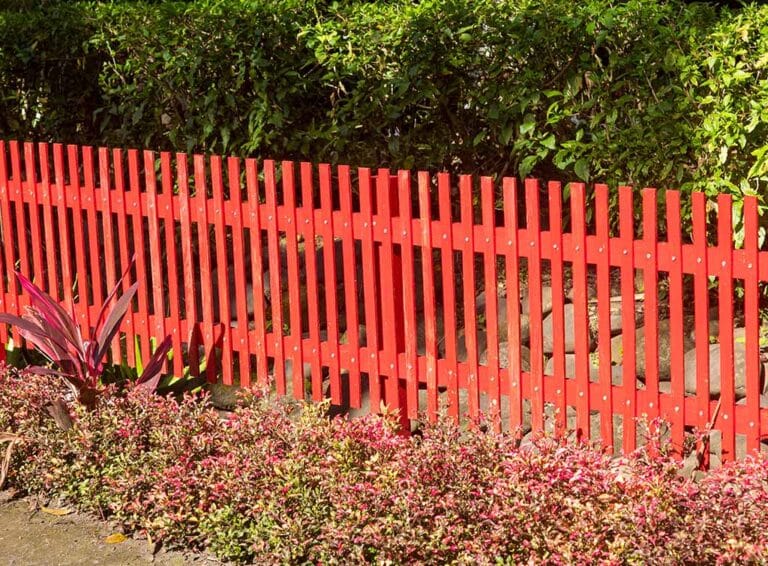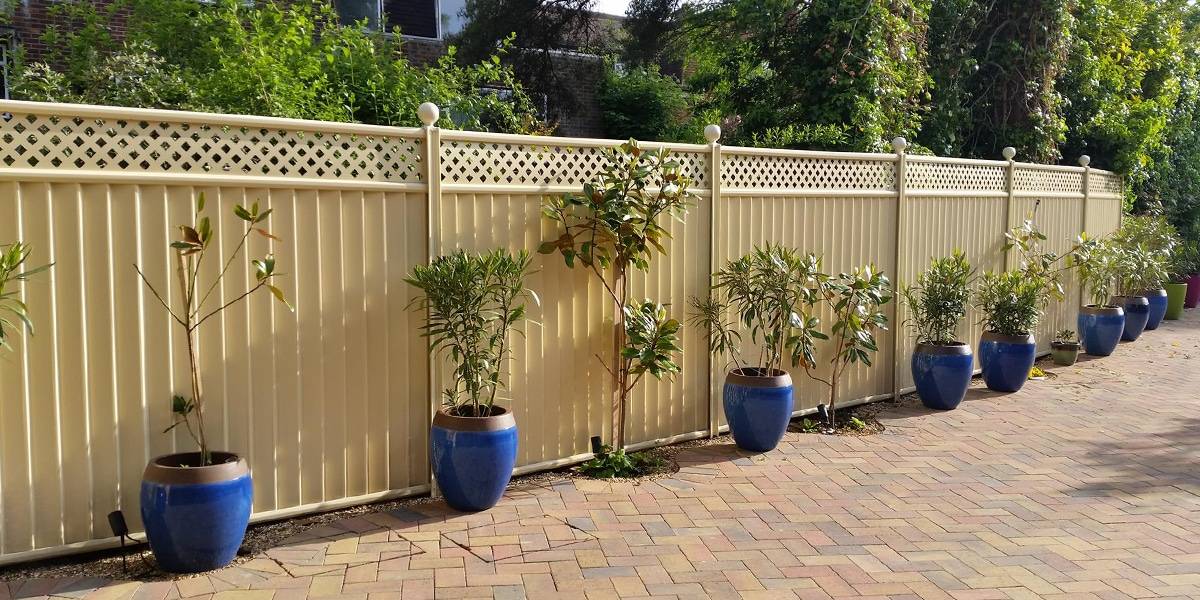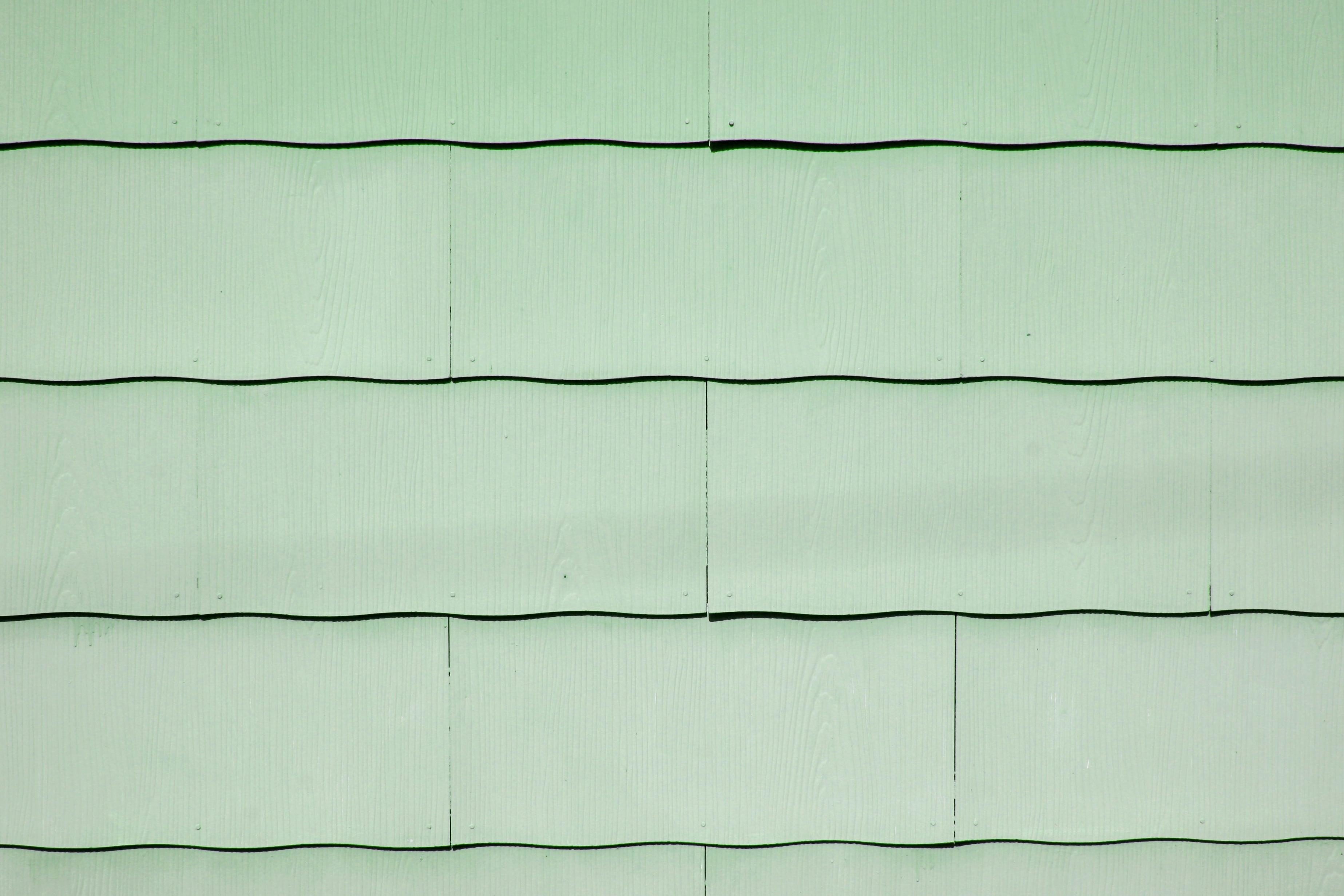Fence & Shed Hues: Dream Garden Makeover
Fence & Shed Hues: Dream Garden Makeover
Your garden is a sanctuary, a personal expression of your style and a haven for relaxation. But have you ever considered the transformative power of color? Beyond the vibrant blooms and lush greenery, the colors of your fence and shed play a surprisingly significant role in shaping the overall aesthetic and atmosphere of your outdoor space. This comprehensive guide delves into the art of choosing the perfect fence and shed colors, offering inspiration and practical advice to help you create your dream garden makeover.
Understanding the Psychology of Color in Garden Design
Before we dive into specific color palettes, let's explore the psychological impact of color on our perception of space. Color is a powerful tool that can evoke emotions, influence moods, and even subtly alter the perceived size and shape of your garden.
-
Warm Colors (Reds, Oranges, Yellows): These colors tend to advance, making spaces feel warmer, cozier, and more intimate. They are ideal for smaller gardens where you want to create a sense of enclosure and warmth. However, overuse can feel overwhelming.
-
Cool Colors (Blues, Greens, Purples): These colors recede, making spaces feel larger, more open, and airy. They are perfect for larger gardens where you want to create a sense of spaciousness and tranquility. They can also offer a calming effect.
-
Neutral Colors (Whites, Grays, Browns, Beiges): These colors provide a versatile backdrop, allowing other elements in your garden, like flowers and plants, to stand out. They are incredibly adaptable and can be paired with almost any other color. They also offer a timeless and classic look.
Understanding these basic principles allows you to strategically use color to enhance your garden's overall design and create the desired atmosphere.
Choosing the Right Fence Color: Form & Function
Your fence is a defining feature of your garden, acting as both a boundary and a design element. The color you choose will significantly impact the overall look and feel of your space. Consider these factors:
-
Your Home's Exterior: The color of your fence should ideally complement the exterior color of your house. Harmonizing colors create a cohesive and visually pleasing aesthetic. Consider using similar shades or complementary colors from the same color family. A stark contrast can also work, depending on the desired effect.
-
Your Garden's Style: The style of your garden dictates the appropriate fence color. A rustic garden might benefit from a weathered wood fence in a natural brown or gray. A modern minimalist garden might call for a sleek, clean-lined fence in a neutral color like white or charcoal gray. A cottage garden could embrace a charming, softer hue like cream or pale green.
-
Privacy and Sunlight: Darker fence colors can absorb more heat and create a sense of privacy, while lighter colors reflect light and create a more open feel. Consider your garden's orientation and the amount of sunlight it receives when choosing a fence color.
-
Maintenance: Different fence colors require different levels of maintenance. Lighter colors may show dirt more readily, while darker colors might fade more quickly in direct sunlight. Choose a color that suits your maintenance preferences and lifestyle.
Popular Fence Color Ideas:
-
Classic White: Timeless, versatile, and always elegant. Perfect for creating a clean, crisp look.
-
Warm Gray: A sophisticated neutral that blends well with various landscaping styles.
-
Charcoal Gray: A modern and dramatic option that adds depth and sophistication.
-
Deep Green: A natural and calming color that complements lush greenery.
-
Earthy Browns: A rustic and charming option that complements natural wood tones.
Complementing Your Shed: Color Harmony and Contrast
Your shed, often a focal point in the garden, should complement your fence and the overall garden design. The color you choose for your shed can significantly impact the visual balance of your outdoor space.
-
Matching or Coordinating Colors: Choosing a shed color that matches or coordinates with your fence creates a sense of unity and harmony. This is particularly effective if your shed is close to your fence.
-
Complementary Colors: Using complementary colors (colors opposite each other on the color wheel) can create a visually striking contrast. For example, a blue fence paired with an orange shed can be a vibrant and eye-catching combination.

-
Analogous Colors: Analogous colors are colors that sit next to each other on the color wheel. Using analogous colors creates a cohesive and harmonious look. For example, a green fence with a blue-green shed.
-
Size and Placement: The size and placement of your shed should influence your color choice. A small shed might benefit from a lighter color to prevent it from overpowering the garden, while a larger shed can handle a bolder color choice.
Popular Shed Color Ideas:

-
Matching the Fence Color: This approach creates a seamless and unified look, particularly effective for smaller sheds.
-
Accent Color: Choose a contrasting color that complements the fence and the overall garden scheme.
-
Natural Wood Stain: This option gives a rustic and timeless appeal, often blending well with various landscaping styles.

Creating a Cohesive Garden Palette
Once you've chosen your fence and shed colors, it's crucial to ensure these choices complement the rest of your garden. Consider:
- Flower Beds and Plants: Select plant colors and varieties that complement your fence and shed colors. Using a mix of warm and cool colors can create a visually interesting and dynamic garden.

-
Pathways and Patio: The colors of your pathways and patio should also be considered. Using coordinating colors can create a visually pleasing flow throughout your garden.
-
Outdoor Furniture: The color of your outdoor furniture can enhance or detract from the overall aesthetic. Choose furniture colors that complement the fence, shed, and plant life.
-
Overall Garden Style: Remember the overall style of your garden. A formal garden may call for a more structured and symmetrical color scheme, while a wildflower garden might embrace a more natural and less structured approach.

Beyond Color: Texture and Materials
While color plays a crucial role, the texture and materials of your fence and shed are equally important. Consider:
- Wood: Offers a classic and versatile look, available in various stains and paints.

-
Metal: Provides a modern and sleek aesthetic, often requiring less maintenance than wood.
-
Vinyl: A low-maintenance option available in a wide range of colors.
-
Composite: Combines the beauty of wood with the durability of other materials.

The texture of your fence and shed can enhance the visual appeal and contribute to the overall atmosphere of your garden.
Inspiring Color Combinations for Your Garden Makeover
Here are a few inspiring color combinations to get you started:

-
Coastal Chic: White fence, light blue shed, sandy-colored pathways, and blue and white flowers.
-
Rustic Charm: Weathered gray fence, natural wood shed, earthy brown pathways, and muted autumnal colors.
-
Modern Minimalist: Charcoal gray fence, white shed, sleek gray pathways, and minimalist planting.

-
Vibrant Mediterranean: Terracotta fence, sunny yellow shed, warm-toned pathways, and bright Mediterranean flowers.
-
Classic English Garden: Cream-colored fence, sage green shed, brick pathways, and classic English roses.
Conclusion: Transform Your Garden with Color
Choosing the right fence and shed colors is a crucial step in creating a beautiful and functional garden. By understanding the psychology of color, considering your garden's style and surroundings, and selecting complementary materials and textures, you can transform your outdoor space into a true sanctuary. Remember to involve your personal preferences and let your creativity guide you. With careful planning and attention to detail, you can create a garden that reflects your unique personality and style, a space where you can relax, unwind, and enjoy the beauty of nature. So, start dreaming and let the color transformation begin!
Fence & Shed Colors: Curb Appeal Magic!
Your home's curb appeal is the first impression it makes. It's the visual invitation that welcomes guests and passersby, setting the tone for the entire property. While landscaping, house color, and driveway materials all play a crucial role, your fence and shed often become surprisingly significant elements in the overall aesthetic. Choosing the right colors for these structures can dramatically enhance your home's charm and value, transforming a mundane backyard into a captivating oasis. This comprehensive guide will explore the art of selecting fence and shed colors, helping you create a harmonious and visually stunning outdoor space.
Understanding the Power of Color
Before diving into specific color palettes, let's understand the psychology of color and its impact on perception. Different colors evoke distinct emotions and create varying moods. Choosing the right colors for your fence and shed is about more than just personal preference; it's about carefully considering the overall effect you want to achieve.
-
Warm Colors: Shades like red, orange, and yellow tend to project a feeling of warmth, energy, and friendliness. They can make a space feel more inviting and lively, but can also feel overwhelming if used excessively.
-
Cool Colors: Blues, greens, and purples generally convey a sense of calm, tranquility, and sophistication. They can create a relaxing and peaceful atmosphere, perfect for a backyard retreat.
-
Neutral Colors: Grays, browns, beiges, and whites are versatile and timeless. They provide a clean, sophisticated backdrop that allows other elements in your landscape to stand out. They're also excellent choices if you want to create a sense of continuity between your house and your outdoor structures.
-
Bold Colors: Black, dark greens, and deep blues can make a striking statement, adding a touch of drama and modernity. However, these colors need to be balanced carefully to prevent the space from feeling too dark or heavy.
Coordinating Fence and Shed Colors with Your Home
The relationship between your home's color and the colors of your fence and shed is crucial. You want to create a cohesive look that enhances the overall aesthetic, rather than jarring the eye. Here are some effective strategies:
-
Complementary Colors: Choose colors that sit opposite each other on the color wheel. For example, a blue house might pair beautifully with an orange or terracotta fence and shed. This creates a vibrant and energetic contrast.
-
Analogous Colors: Select colors that are adjacent to each other on the color wheel, creating a harmonious and soothing effect. For instance, a green house might look stunning with a combination of olive green and sage green for the fence and shed.
-
Monochromatic Schemes: Using variations of a single color creates a cohesive and elegant look. Different shades and tints of the same color family can add depth and visual interest without being overly jarring. For example, a gray house could be beautifully complemented by a light gray fence and a charcoal gray shed.
-
Neutral Base, Bold Accent: A neutral-colored house (beige, gray, white) offers maximum flexibility. This allows you to use bolder colors for your fence and shed, adding a pop of personality without overwhelming the overall aesthetic. A bright red shed against a neutral backdrop can be incredibly striking.

Considering Your Landscaping and Surroundings
Your landscape and the surrounding environment should heavily influence your color choices. Consider these factors:
- Natural Elements: Observe the colors in your existing landscape. If you have a lot of green foliage, a complementary color scheme, such as shades of brown or terracotta, can blend seamlessly. If your garden features vibrant flowers, consider incorporating those colors subtly into your fence and shed design.

-
Neighborhood Context: Take a look at the homes in your neighborhood. While you want your home to stand out, you also want it to maintain a degree of harmony with its surroundings. Extremely bold or unusual choices might clash with the overall neighborhood aesthetic.
-
Sunlight Exposure: The amount of sunlight your fence and shed receive will affect how the colors appear. Darker colors can absorb more heat, while lighter colors reflect it. Consider the impact of sunlight on your color choices, especially if you live in a particularly sunny or shady area.
Material Considerations

The material of your fence and shed also impacts color choices. Certain colors work better with specific materials:
-
Wood: Wood fences and sheds offer a wide range of staining and painting options. Natural wood tones can be enhanced with stains that bring out the wood's grain, while paints can create a more uniform and modern look.
-
Metal: Metal fences and sheds are often powder-coated in a variety of colors. Powder coating is durable and long-lasting, making it a popular choice for exterior applications.

-
Vinyl: Vinyl fences and sheds are available in a limited range of colors, but they offer low maintenance and durability. Neutral colors are often popular choices for vinyl due to their versatility and timeless appeal.
-
Composite: Composite materials offer a mix of wood and plastic, allowing for a variety of color options with low maintenance benefits.
Popular Color Combinations for Fences and Sheds

Let's explore some popular and stylish color combinations that can elevate your curb appeal:
-
Classic White Fence & Dark Gray Shed: This combination offers a timeless elegance. The crisp white fence creates a clean and airy feel, while the dark gray shed adds a touch of sophistication.
-
Charcoal Gray Fence & Deep Teal Shed: This sophisticated pairing offers a modern and moody vibe, perfect for a contemporary landscape design.

-
Warm Brown Fence & Red Shed: This bold combination injects a vibrant energy into your backyard. The warm brown fence grounds the space, while the red shed acts as a captivating focal point.
-
Sage Green Fence & Light Gray Shed: This calming combination creates a serene and peaceful atmosphere, perfect for a relaxed garden setting.
-
Black Fence & White Shed: This high-contrast combination offers a dramatic and eye-catching visual appeal. It's perfect for adding a modern edge to a traditional landscape.

Beyond Color: Texture and Style
While color is paramount, don't overlook the importance of texture and style. The material of your fence and shed, as well as decorative elements, can add significant depth and character.
- Wood Grain: The natural texture of wood adds warmth and character. Consider using different types of wood to create visual interest.

-
Metal Accents: Adding metal accents, such as hardware or decorative elements, can create a contemporary or rustic feel, depending on the style.
-
Lighting: Strategically placed lighting can highlight the colors of your fence and shed, creating a beautiful nighttime ambiance.
-
Plants & Flowers: Use strategically placed plants and flowers to complement and enhance the colors of your fence and shed, creating a unified and harmonious landscape design.

Maintaining Your Fence and Shed
Once you've chosen the perfect colors for your fence and shed, remember that maintaining their appearance is key to preserving your curb appeal. Regular cleaning and repainting or restaining, as needed, will ensure that your outdoor structures remain beautiful and vibrant for years to come.
Conclusion: Unleashing the Magic
Choosing the right colors for your fence and shed can truly transform your home's exterior. By understanding the psychology of color, coordinating your choices with your home and landscaping, and considering material and style, you can create an outdoor space that is both visually stunning and personally fulfilling. Remember, the goal is to create a cohesive and inviting atmosphere that reflects your personality and enhances your home's value. Let your creativity shine, and unleash the curb appeal magic!


